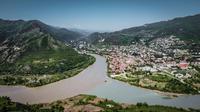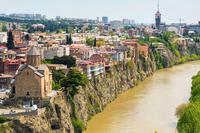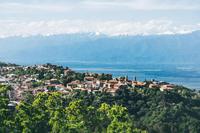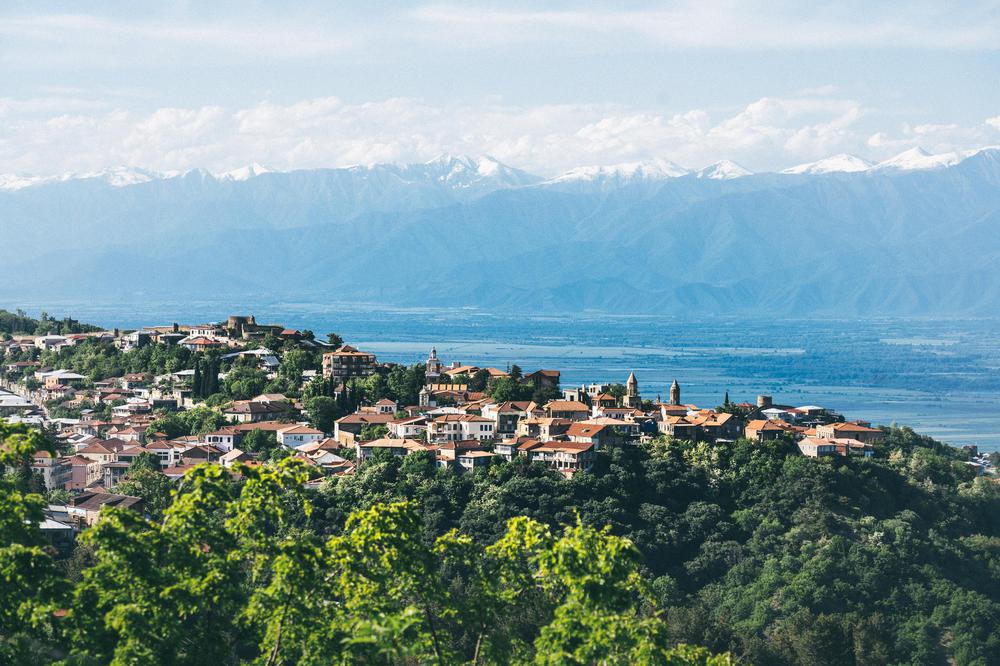The Pankisi Valley, a region in Georgia's northeastern area, presents a unique blend of cultural richness and natural beauty. This article delves into the various facets of the valley, exploring its geographical significance, cultural diversity, historical background, and current relevance in terms of tourism and global affairs.
Geographical Overview And Historical Context
Located in the northeastern part of Georgia, near the border with Russia's Chechen Republic, Pankisi Valley stretches over an area of approximately 34 square kilometers (13 square miles). The valley is surrounded by the Greater Caucasus Mountains, providing a picturesque backdrop. Historically, Pankisi has been a place of strategic importance due to its location. It has served as a crossroads for different cultures and empires, shaping its diverse ethnic composition.
The valley is primarily inhabited by the Kists, an ethnic group closely related to the Chechens of Russia. Additionally, it hosts a small number of Chechen refugees who have settled there over various periods, especially since the Chechen Wars in the late 20th and early 21st centuries. The presence of these communities has endowed the valley with a unique cultural tapestry, reflective of both Georgian and Chechen traditions.
Cultural Mosaic And Local Traditions
Pankisi Valley stands out for its rich cultural heritage, influenced by both Georgian and Chechen customs. The region is renowned for its traditional music and dance, which are integral parts of local celebrations and festivities. Traditional Georgian polyphonic singing, a UNESCO Intangible Cultural Heritage, is also prevalent here. The local cuisine offers a delightful fusion of Georgian and North Caucasian flavors, with dishes like khinkali (Georgian dumplings) and zhizhig-galnash (Chechen meatballs) being popular among both locals and visitors.
Religiously, the valley is predominantly Sunni Muslim, with Islam playing a significant role in the daily lives of its inhabitants. This adds another layer to Georgia's predominantly Orthodox Christian culture, showcasing the country's religious diversity.
The Valley In The Context Of Global Affairs
In the early 2000s, Pankisi Valley gained international attention due to its role as a refuge for Chechen militants and the subsequent military and security operations by Georgian and international forces. However, in recent years, the situation has stabilized significantly. The Georgian government, with assistance from international partners, has implemented various initiatives to promote development and stability in the region.
Efforts have been made to integrate the valley more effectively into the national framework, focusing on improving infrastructure, education, and economic opportunities. These efforts have largely been successful, transforming Pankisi from a region of geopolitical tension to a model of multicultural coexistence and resilience.
Pankisi Valley As A Travel Destination
In terms of tourism, Pankisi Valley is an emerging destination for those seeking an off-the-beaten-path experience. Its stunning natural scenery, including the Alazani River and surrounding mountain ranges, offers opportunities for outdoor activities such as hiking, horseback riding, and bird watching. The valley’s unique cultural landscape, with its blend of Georgian and Chechen influences, provides an enriching experience for culturally curious travelers.
Tour operators in Georgia are increasingly including Pankisi in their itineraries, offering guided tours that showcase the valley's natural beauty, cultural heritage, and the warm hospitality of its people. Visitors can engage in homestays, a popular form of accommodation in the area, which allows for a more authentic experience of local life and traditions.
Challenges And Opportunities
Despite its potential, Pankisi Valley faces challenges in terms of infrastructure and economic development. The lack of adequate tourist facilities and limited transportation options can be a hurdle for tourism growth. However, these challenges also present opportunities for sustainable and community-driven tourism development, which can play a significant role in the valley’s economic upliftment.
Environmental And Ecological Significance
The environmental aspect of Pankisi Valley is notable, with its rich biodiversity and pristine natural environments. The valley's ecosystems range from riverine landscapes along the Alazani to dense forests and alpine meadows in the higher elevations. This diversity makes it an ideal habitat for various species of flora and fauna, some of which are endemic to the region. Efforts are ongoing to preserve these natural habitats, balancing ecological conservation with the development of eco-tourism.
The Role Of Local Communities In Tourism
Local communities in Pankisi Valley play a pivotal role in the development of tourism. They offer unique insights into the valley's culture and history, facilitating genuine interactions for travelers. Community-based tourism initiatives have been gaining momentum, empowering locals to showcase their heritage while providing them with economic benefits. These initiatives include local guides, family-run guesthouses, and cultural workshops, allowing visitors to immerse themselves in the local way of life.
Connectivity And Accessibility
Access to Pankisi Valley has improved over the years, but it still remains a challenge. The nearest major city is Tbilisi, approximately 160 kilometers (about 100 miles) away, from where the valley can be accessed by road. While public transportation options are limited, private tours and car rentals offer more flexibility for travelers. Improving accessibility remains a key focus for the regional government to enhance the valley's appeal as a tourist destination.
The Future Of Pankisi Valley In Georgia’S Tourism Landscape
Looking ahead, Pankisi Valley has the potential to become a significant contributor to Georgia's tourism sector. Its unique cultural identity, coupled with stunning natural landscapes, positions it as an attractive destination for those seeking an authentic and diverse travel experience. The challenge lies in developing this potential in a sustainable manner that benefits both the local communities and the environment.
Conclusion
Pankisi Valley, with its rich cultural mosaic, historical significance, and natural beauty, offers a unique glimpse into the diversity and resilience of Georgia. As it continues to evolve and integrate into the broader context of Georgian tourism, it stands as a symbol of multicultural coexistence and potential. For travelers seeking an immersive and authentic experience, Pankisi Valley is undoubtedly a destination worth exploring.

 Rivers of Georgia
Rivers of Georgia
 Mtkvari River
Mtkvari River
 Alazani Valley
Alazani Valley


